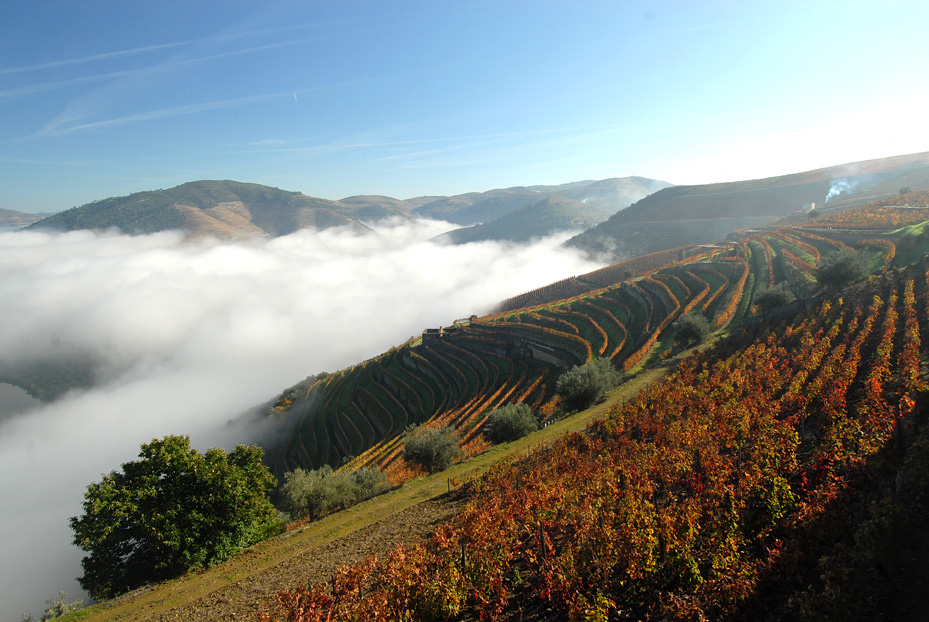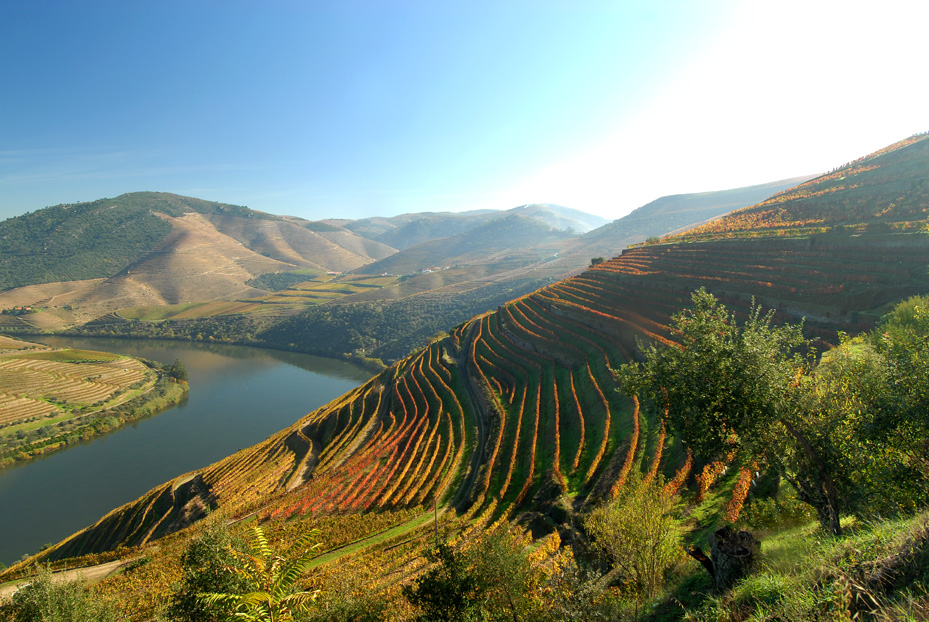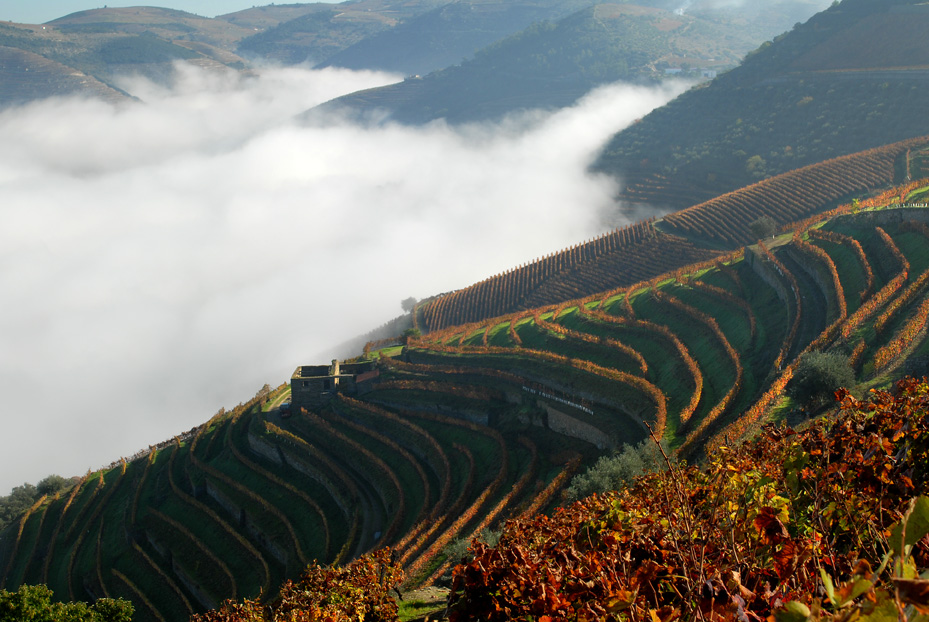Total vineyard area – 134,5 ha
• Traditional old vines – 37,7 ha (complex field blend of indigenous varieties)
These are vineyards with ages between 50 and just over 100 years. There is no dominant variety, therefore resulting in a very rich diversity, offering each vine a particular style. This way, the field blend may offer many different varieties in one parcel: Tinta Roriz, Touriga Franca, Touriga Nacional, Tinta Amarela, Rufete, Sousão, Preto Martinho, Cornifesto, Tinto Cão, Tinta Francisca, Touriga Brasileira, Tinta Barroca, Moreto, Bastardo, Tinta Roseira, Tinta de Rei, Tinta Carvalha, Malvasia Preta, Pinot Noir, Alicante Bouschet, Mondet, Tinta Bastardinha, Donzelinho Tinto, Casculho, amongst others.
• New vines – 10 ha (field blend of T. Franca, Tinta Roriz & Tinta Barroca)
The new field blends were planted in the 80’s up until 1996. The purpose of these vineyards was to stabilize yields per hectar and focus on the production of prime DOC Douro wines.
• Single varietal plots – 86,8 ha
These vineyards represent the new era, with the first plantation in 1996 up until today. Modern techniques were implemented in these plots with the purpose of ensuring sustainable production and biodiversity in our ecosystem. On the other hand, grapes were not planted in a field blend but instead in individual parcels, allowing us to recover some of the oldest varietals found in the field blends which were close to extinction. These vineyards allow a clearer understanding of our terroir as they perfectly combine the three pilars of quality: place (climate, soil and topography), viticultural/oenological technique and grape varietal.


























